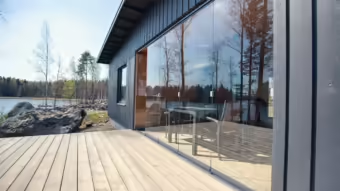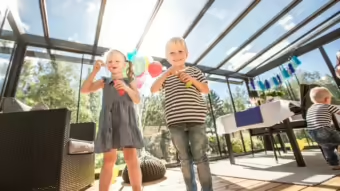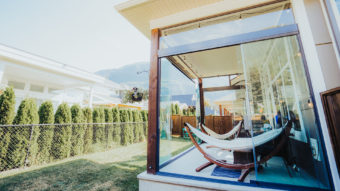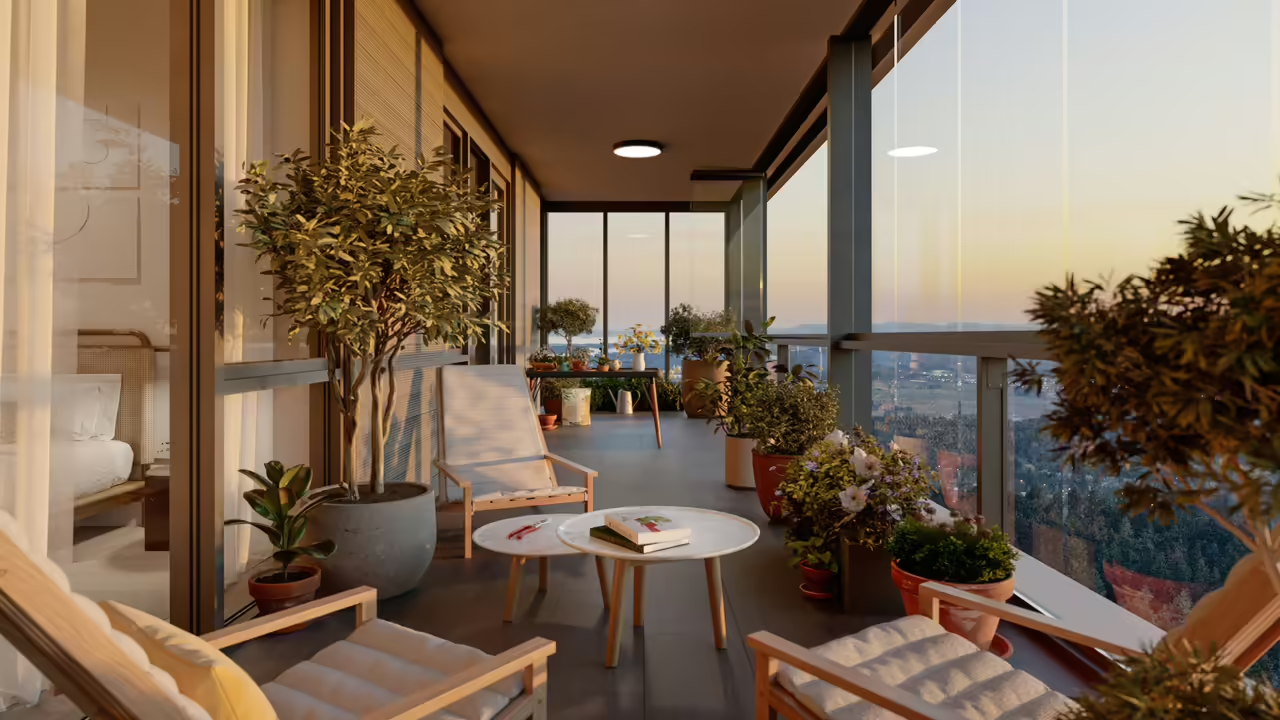
Are There Building Height Limits For Balcony Glazing?
As our communities grow and high-rise buildings become the norm, modern architecture has had to keep up. Today, it’s all about balancing aesthetics, structural integrity, and functionality while making sure residents can enjoy their outdoor space comfortably and safely.
Features like balcony glazing add safety, energy efficiency, and a richer living experience to each suite. But, as you know, that the taller a building becomes, the more complicated its design can be, and simple features may need more thought and planning.
If you’ve been considering balcony glazing for your next project but aren’t sure of its limits with regard to height, this article is perfect for you. A great example of this technology in action is Solhouse 6035 by Bosa, the tallest building to feature Lumon glazing so far—more on that at the end of this article.
Let’s go into the physics of building designs and how that relates to our balcony glazing systems.
The Physics of Designing Balconies on Tall Buildings
Just like any other building project, physics plays a huge role in what the design can hold and what features the building can have. Balconies on skyscrapers have to handle some serious forces.
Engineers make sure they can support weight loads, absorb movement from wind and temperature changes, and fit seamlessly into the building’s design. To keep them strong and durable, materials like reinforced concrete, steel, and aluminum are commonly used.
Often, the higher you go, the stronger the wind is. At greater heights, wind pressure grows dramatically, which means balconies need to integrate smart, aerodynamic designs that prevent uncomfortable wind tunnels.
This is where Lumon balcony glazing makes a noticeable difference. It acts as a protective barrier, reducing exposure to high winds while keeping the space comfortable and usable year-round.

How Does Lumon Balcony Glazing Work?
Lumon’s retractable glazing system is a sleek, frameless solution that allows residents to enclose their balconies while still enjoying an open-air feel when they want to.
The system’s individual glass panels slide and pivot, opening or closing depending on the weather or personal preference. It’s a smart way to add more comfort for homeowners without compromising the look of the building.
Outside of how sturdy and safe balcony glazing is, it also brings with it a few strong benefits.
Noise Reduction
City life can be noisy—traffic, construction, and everyday hustle and bustle can make it hard to relax. And, for many first-time buyers looking to get into the market, how noisy an area is can make-or-break their decision to buy. Lumon glazing acts as a sound barrier, cutting down noise pollution by up to 50%.
Energy Efficiency
Lumon glazing creates a buffer between the exterior wall of the unit and balcony edge. This means, during the winter months, the balcony feels warmer, and you need much less heat to keep it comfortable.
Added Space
Whether used as a cozy lounge, a home office, or a spot for homeowners to enjoy a morning coffee, balcony glazing allows homeowners to make the most of the home, no matter the season.
Extra Protection
Families with small children or pets want to be sure their little ones are safe on the balcony—especially when the building is multiple storeys high. Lumon balcony glazing systems add an extra layer of protection by protecting the space without taking away the view or fresh air.
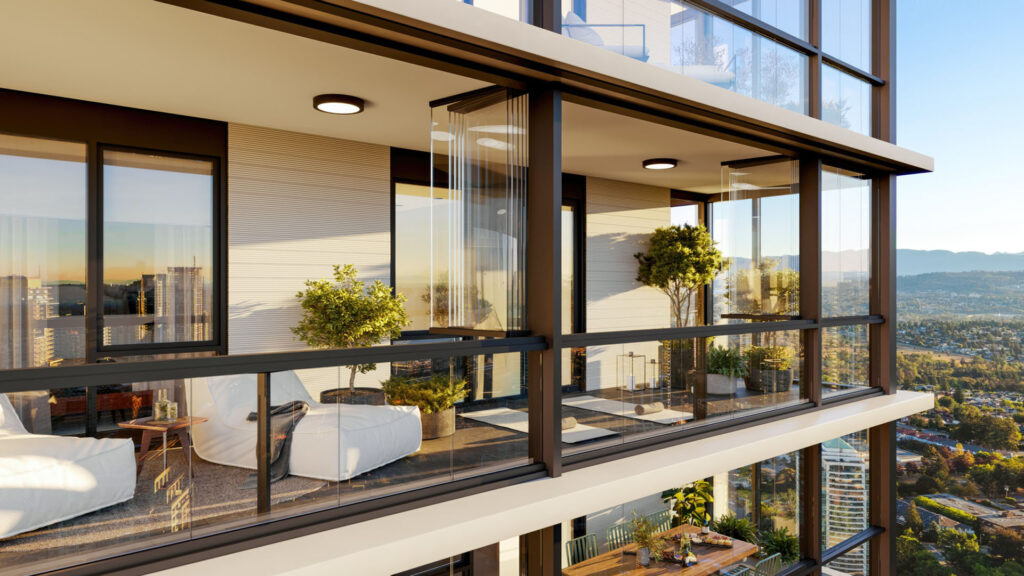
The Lumon Glazing Installation Process
The installation of Lumon glazing follows a meticulous process:
- Assessment: Engineers check the balcony’s structure and dimensions to customize the glazing solution.
- Manufacturing: We craft glass panels with precision to fit the specific balcony design.
- Installation: Our team of seasoned professionals comes in to install the tracks, panels, and other components.
Building height doesn’t limit the design or installation of balcony glazing, but it does bring some unique challenges. Taller buildings often mean trickier site logistics for installation and higher wind pressures that can shape our glazing solutions.
Wind can complicate a project, but we simply take our time to conduct a thorough analysis of the conditions we’re facing. Winds can be stronger on lower floors due to being funneled between structures, but most wind studies we’ve worked with show higher pressures at the upper levels. With thoughtful planning, we go into each project knowing our glazing solutions are up for the job—no matter the height.
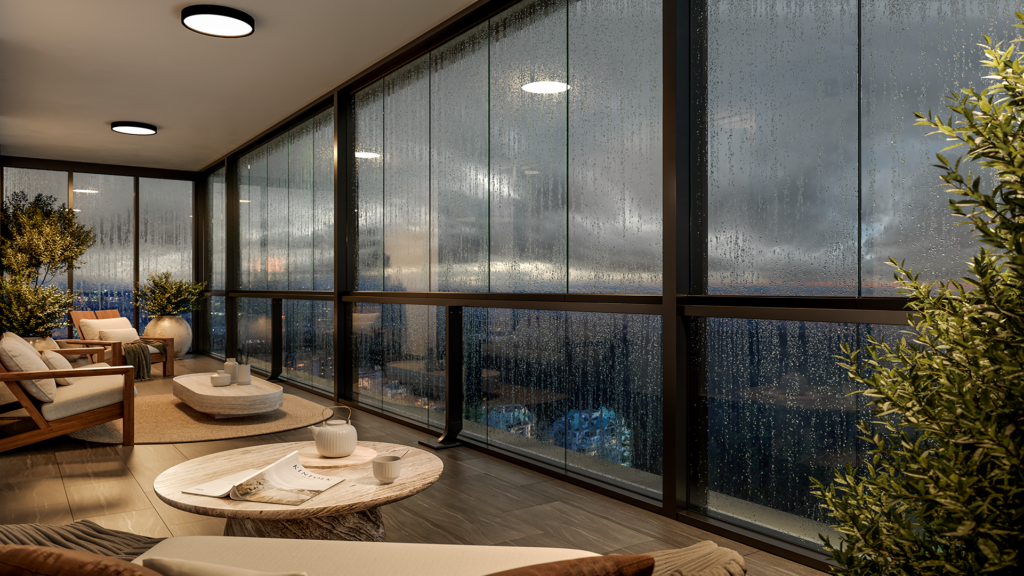
Case Study: Solhouse 6035 by Bosa
The tallest building we’ve designed to date is Solhouse 6035—a 50-storey high-rise in Burnaby, British Columbia, Canada. Balcony glazing has given this residential tower benefits improved safety, enhanced energy efficiency, and year-round usability of its balconies; a key factor in maximizing your outdoor space when you live in the rainy Metro Vancouver area.
Image courtesy of Bosa Properties
Could Lumon Balcony Glazing Work For Your Next Project?
Want to see how Lumon glazing can transform high-rise balconies? If you’re looking to enhance safety, energy efficiency, and livability in a high-rise, our balcony glazing is a proven solution. We’ve worked with developers and architects across Canada to bring their visions for new multi-residential buildings to life—could yours be next?
-
How Much Does a Sunroom Cost?
Read more…Sunrooms have become a popular addition for homeowners looking to enhance their living space and connect with the outdoors without compromising comfort. However, as delightful as they may be, planning your sunroom involves understanding the factors that influence its cost.
-
How to keep cool in a summer sunroom
Read more…Sunrooms can be great in-between spaces, where you get the best of both worlds. However, in the summer, even these spaces can get quite warm without preparation. One benefit is that the space acts as a buffer to your home, so the cooling needs for inside your home may actually be less.
-
What is the difference between three and four season sunrooms?
Read more…It’s no secret: Lumon’s rooms are designed for three seasons use. It just so happens that this market is one of the best and fastest growing as well. But how do they compare with a four-season sunroom? Let’s find out!
